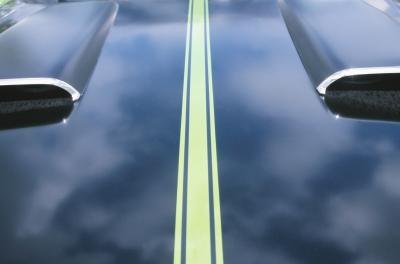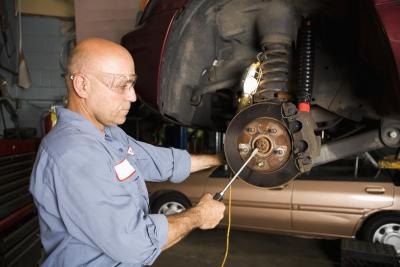
The 2009 Ford F-150 came with a wide array of high-luxury and high-tech options available. One of these options was Fords Microsoft-powered Sync. This system allows the driver to change radio stations, adjust the radio volume, perform basic vehicle diagnostics and even make phone calls by just speaking. Sync utilized Bluetooth technology to access the drivers cell phone, in order to make hands-free calling possible. To make this system function correctly, as with all Bluetooth devices, you must pair the cell phone with Sync.
Instructions
1 Turn your cell phones Bluetooth on. This process varies, depending on the phone you have.
2 Insert the ignition key in the F-150s ignition and start the truck. Turn the radio on.
3 Press the button on the radio in the shape of a phone. Observe as "Connecting" or "No Phone Found" shows on the Sync display, depending if you already paired a phone to the F-150.
4 Press the up or down arrow key until "Add Bluetooth Device" appears on the Sync display screen. Press the "OK" button.
5 Listen for Sync to say "Press OK to begin pairing device." Press the "OK" button.
6 Listen for Sync to say "Search for SYNC on your device and enter the PIN provided by SYNC." Locate "Sync" in the Bluetooth devices listed on your phone and select it. Enter the PIN provided by on the Sync display screen. You have three minutes to complete this task, or you must go back to Step 1.
7 Observe as "Device Connected" appears on the Sync display screen, if successfully paired.
8 Press the "OK" button when "Primary" shows up on the Sync display screen. To set this phone as primary, click "OK" when "Yes" appears on the screen. Scroll to "No," using the arrow keys, and press "OK" if you do not want this phone as the primary. The primary phone is the phone that the Sync searches for by default when the F-150 starts.
9 Observe as "Download Phonebook?" appears on the Sync display, if your phone supports this feature. Press the "OK" button. If you would like to download your phonebook to Sync, press "OK" when "Yes" appears on the screen. If not, scroll to "No," using the arrow keys, then press "OK."
10 Observe as "Download Complete" appears on the Sync display when the phonebook download is complete, if applicable.
11 Press the arrow keys until "Exit Phone Menu" appears on the Sync display screen, and press "OK" to exit the system.
12 Turn the ignition off and remove the key.
13 Turn your cell phones Bluetooth on. This process varies, depending on the phone you have.
14 Start the F-150s engine and turn the radio on.
15 Press the "Phone" button on the F-150s radio. This allows you to access the phone menu.
16 Touch the "Settings" button on the left of the navigation screen.
17 Press the "Add" button on the right side of the navigation screen. Observe as a "Pass-Key" appears on the screen. Locate "Sync" in the Bluetooth devices on your cell phone and add the "Pass-Key" when prompted. This process varies, depending on your model of phone.
18 Observe as "Pairing Successful" appears on the screen; if this does not appear, start over from Step 1.
19 Select "Yes" or "No" when "Set as Favorite Phone?" appears on the screen. Selecting "Yes" means this phone is the one that Sync will connect to when first started.
20 Observe as "Download Phonebook/Call History?" appears on the screen. Select "Yes" to add your phonebook and call history to Sync. Select "No" not to add it.
21 Turn the ignition off and remove the key.
































